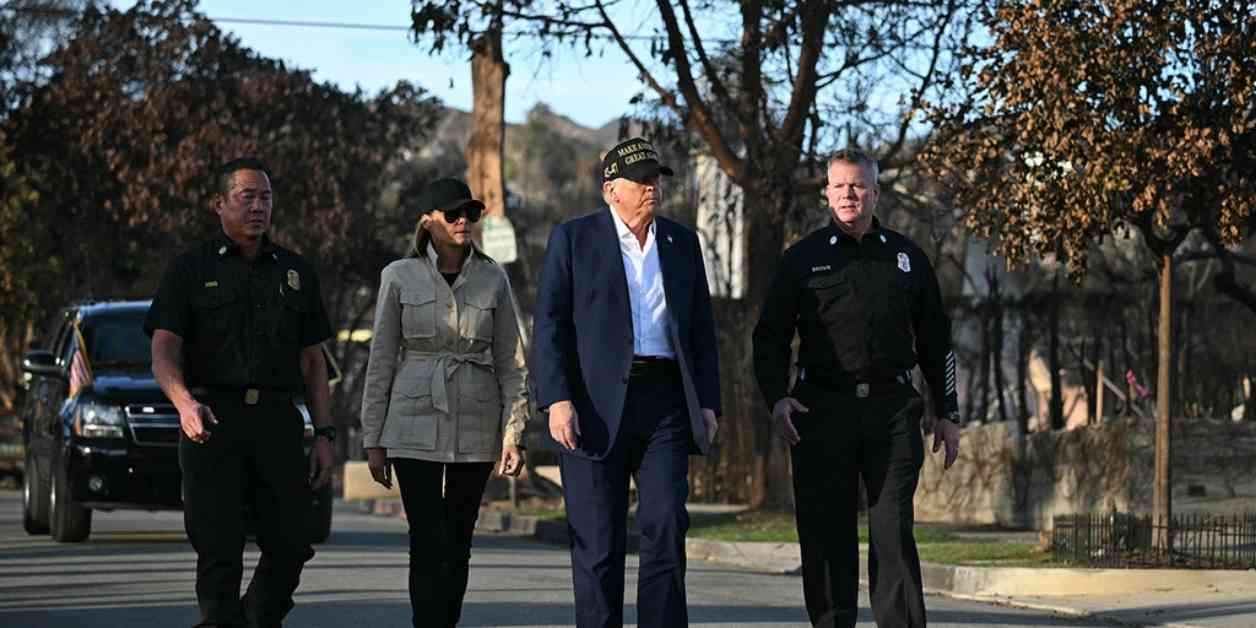President Donald Trump made a controversial claim on Monday night, stating that the military had entered California to “turn on the water.” However, state water officials quickly refuted this statement, clarifying that the military had not intervened in the state’s water supply.
In a post on Truth Social, Trump declared, “The United States Military just entered the Great State of California and, under Emergency Powers, TURNED ON THE WATER flowing abundantly from the Pacific Northwest, and beyond.” He emphasized that prioritizing the people over environmental concerns was paramount, concluding with, “Enjoy the water, California!!!”
The California Department of Water Resources swiftly responded, asserting that the military had not entered the Golden State. Instead, federal water pumps were restarted following a brief maintenance period, ensuring that water resources remained plentiful in Southern California. State Senate Pro Tem Mike McGuire echoed this sentiment, dispelling misconceptions about water flow from the Pacific Northwest to the Central Valley and affirming that the military had not intervened in the delta.
Trump’s claim followed an executive order directing federal agencies to explore ways to increase water delivery to Southern California and the Central Valley in response to recent wildfires that ravaged the Los Angeles area. The former president outlined two conditions for disaster relief in California: the approval of voter identification legislation and increased water deliveries from Northern California to arid regions in the south.
During a visit to Los Angeles to survey wildfire damage and engage with local officials and residents, Trump reiterated his expectations, stating, “I want to see two things in Los Angeles. Voter ID, so that the people have a chance to vote, and I want to see the water be released and come down into Los Angeles and throughout the state.” He emphasized the importance of meeting these conditions for him to be regarded as the greatest president California had ever witnessed.
Despite Trump’s visit and calls for assistance, Republicans in Congress proposed linking wildfire aid to a debt ceiling increase or reforms to California’s fire-mitigation policies. This debate underscores the complex intersection of politics, disaster response, and environmental management, highlighting the challenges faced by the state in mitigating wildfires and securing essential resources for its residents.
Expert Insights on Water Management
To shed light on the intricacies of water management in California, we turn to Dr. Elena Rodriguez, a leading hydrologist at the California Institute of Water Resources. Dr. Rodriguez emphasizes the critical role of federal and state collaboration in ensuring sustainable water supplies amidst increasing climate variability and growing population demands.
“California faces unique challenges in balancing water allocations between urban, agricultural, and environmental needs,” Dr. Rodriguez explains. “While federal intervention can provide short-term relief during emergencies like wildfires, long-term solutions require comprehensive water policies that integrate conservation, efficiency, and equitable distribution.”
She underscores the importance of investing in resilient water infrastructure, enhancing data-driven decision-making, and fostering public engagement to address the complex water challenges facing California. By leveraging science, technology, and stakeholder partnerships, the state can navigate water scarcity, climate extremes, and competing interests to safeguard its water resources for future generations.
Community Perspectives on Wildfire Relief
In the aftermath of devastating wildfires, communities in California have rallied together to support recovery efforts and rebuild resilience. Maria Sanchez, a resident of Los Angeles directly impacted by the recent fires, shares her perspective on the urgent need for assistance and solidarity in addressing the aftermath of natural disasters.
“Seeing the destruction caused by wildfires firsthand is heartbreaking, but witnessing the outpouring of support from neighbors, volunteers, and first responders gives me hope,” Sanchez reflects. “We need practical solutions and sustainable strategies to prevent future wildfires, protect our homes, and preserve our environment for our children.”
Sanchez’s sentiments echo the resilience and unity demonstrated by Californians in the face of adversity, underscoring the importance of community collaboration, emergency preparedness, and long-term recovery planning. As the state grapples with the dual challenges of wildfires and water management, fostering a sense of shared responsibility and collective action is essential to building a more resilient and sustainable future for all Californians.


